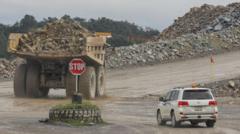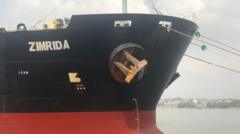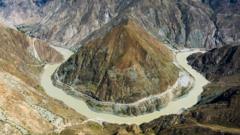The U.S. pushes forward with plans for ocean floor mining, igniting tensions over environmental issues and international regulations.
U.S. Advances Plans for Seabed Mining Amid Controversy

U.S. Advances Plans for Seabed Mining Amid Controversy
The Interior Department's review of a seabed mining proposal off American Samoa stirs debate on international law.
In a significant move towards seabed mining, the U.S. Interior Department announced on Tuesday that it will assess a proposal from Impossible Metals, a Californian firm, targeting valuable mineral extraction off the coast of American Samoa. This announcement follows a presidential executive order last month that aimed to accelerate the permitting process for mining operations in both U.S. territories and international waters.
Currently, most nations contend that the U.S. lacks the authority to exploit seabed resources beyond its territorial limits. The ocean floor is rich in potato-sized nodules that house essential minerals like nickel, cobalt, and manganese—key components for advanced technologies that are vital to U.S. economic and military interests. With the global supply of these minerals increasingly monopolized by China, the urgency to seek domestic sources has heightened.
Historically, commercial-scale seabed mining remains unexplored due to significant technological and environmental challenges. Nonetheless, the growing demand for these metals has prompted many countries to press for mining projects. According to an international treaty ratified by nearly every nation but the U.S., mining in international waters must await proper regulatory and environmental frameworks before any activities commence.
President Trump's recent executive directive has sparked backlash from various international governments and activist organizations, who argue that unilateral U.S. actions infringe upon established global laws concerning shared maritime resources.


















